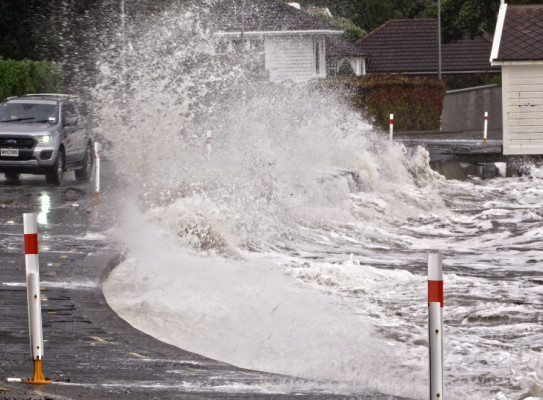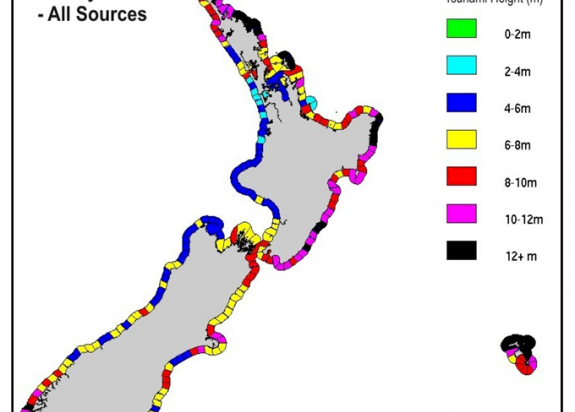New report updates NZ’s exposure to tsunami

A new report on New Zealand’s tsunami hazards shows some parts of the New Zealand coast are exposed to greater tsunami hazard than previously thought, while the hazard in other coastal regions is the same or even less.
The findings come from a 220-page GNS Science report that was commissioned by the Ministry for Civil Defence and Emergency Management. It updates a 2005 report on New Zealand’s tsunami hazards, also produced by GNS Science.
The report notes that earthquakes in some offshore areas, while not more likely, could be bigger than previously thought. This is because there is now more uncertainty about the maximum size of earthquakes on plate boundaries. This means that some local and regional tsunamis could be larger than previously estimated.
Therefore, tsunami generated by nearby offshore ruptures now represent a higher threat, while distant tsunami – from across the Pacific - are a smaller threat than shown in the 2005 report.
The main areas where tsunami pose a greater hazard than previously understood are:
- the coasts of Northland, the northwest part of Auckland, Great Barrier Island, the Coromandel Peninsula, and the Bay of Plenty
- The North Island’s East Cape and parts of the Wairarapa coast
- Southland, Stewart Island, Fiordland and Westland.
The estimated maximum tsunami wave heights in some of these areas have increased by about 50 percent.
For the most hazardous areas – Northland, Great Barrier, parts of East Cape and Wairarapa – it is possible that waves could reach 15m above the normal sea level at the shoreline. In contrast, there are parts of the North Island’s west coast where the maximum tsunami height is not expected to exceed 5m.
Report compiler William Power, of GNS Science, said historical evidence showed that dangerous local or regional tsunami occurred in New Zealand every 40 to 50 years on average.

So it is likely that at least one such event will occur in the lifetime of most New Zealanders.
Dr Power said it was impossible for estimates of size and frequency to be exact. But underplaying the danger would be irresponsible, as it could put people at risk.
The report incorporates information gathered on the 2004 Indian Ocean, 2009 South Pacific, and 2011 Tohoku tsunamis. All were produced by quakes that were substantially larger than had been considered likely at those locations.
Scientists believe there are fewer restrictions on the maximum magnitudes of earthquakes that occur at tectonic plate boundaries. They have developed new scientific models to take this increased uncertainty about the maximum possible size of earthquakes.
